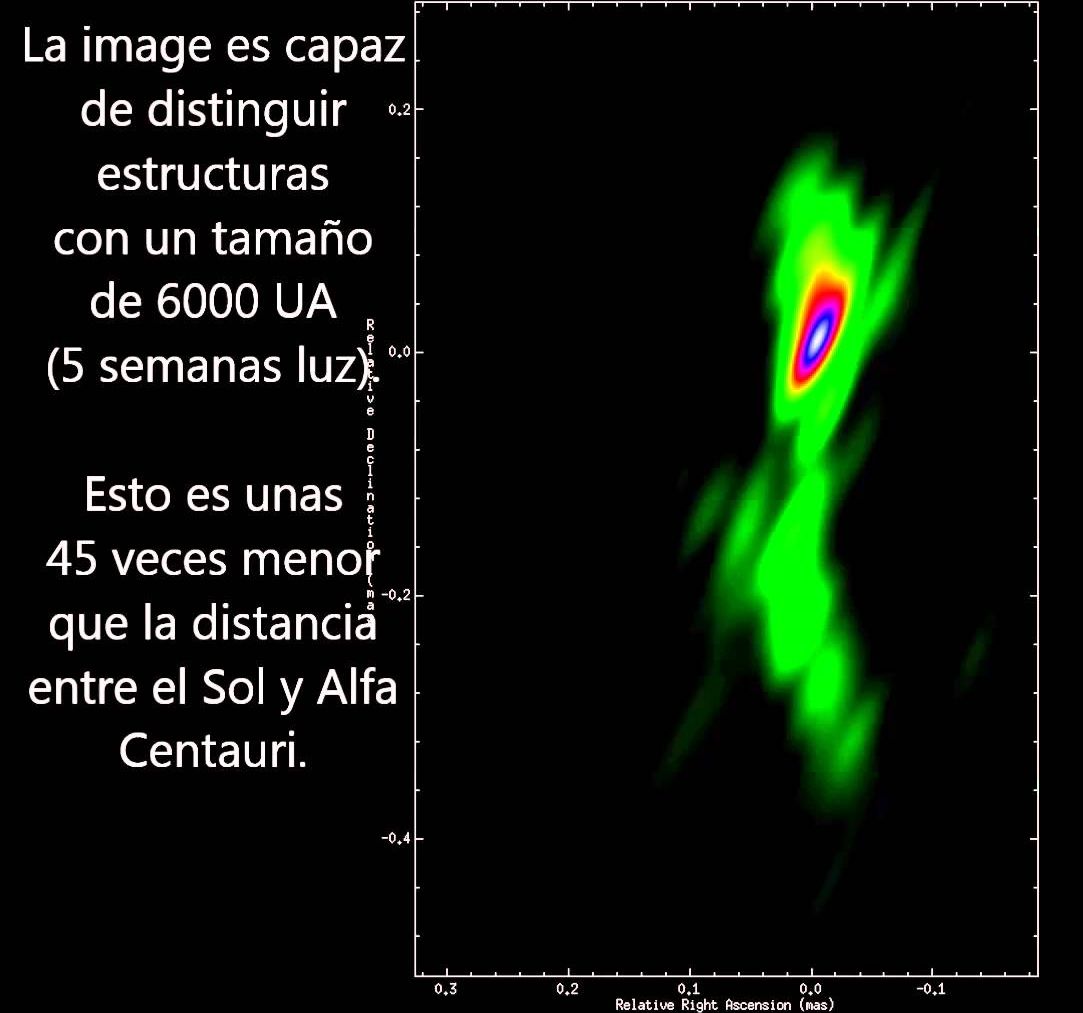The cosmos came into sharper focus this week with astronomers releasing the highest resolution astronomical image yet. The product of 15 earthbound radio telescopes and a Russian satellite, the image of a black hole in a galaxy 900 millions light years away is detailed enough to show the equivalent of a US 50-cent piece on the Moon.
According to Instituto de Astrofísica de Andalucía (IAA-CSIC), which is leading the project, the image is the product of six European radio telescopes, the nine dishes of the US National Science Foundation’s Very Long Baseline Array (VLBA), and the Spektr-R satellite of the RadioAstron mission.
The data from these were combined by the Max Planck Institute for Radio Astronomy in Bonn using a technique called interferometry, which is a way of turning a number of optical or radio telescopes distributed across an area into one gigantic telescope. It does this by combining the images from these telescopes so they interfere with one another. By analyzing the amplitude and phase of the interference patterns, scientists can generate a new image of much higher resolution.










Comments are closed.